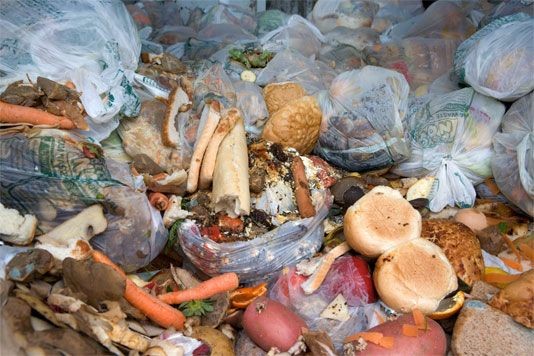How to reduce food waste? Apply a little common sense

Progress is being made in the fight against food waste, but there's more we can all do.
The figures on food waste are astounding, and they’re growing: 7.2 million tonnes of food is thrown away annually (in 2008 it was 3.6 million). Around 2.2 million tonnes is thrown away due to cooking, preparing or serving too much and a further 2.9 million tonnes is thrown away because it was not used in time.
This wasted food has a total cost of £2 billion, which averages out at £50 a month for each family in Britain. There’s also the energy costs used in storing it, and costs incurred by your local authority in removing it, which you pay for in council tax. As you can see, this is madness.
It's the subject of a major food conference this week in London, called No Opportunity Wasted, which aims to reduce food waste from "field to fork". Recommendations from the conference will be presented to the European Union, which has earmarked 2014 as a year of food waste action.
Steps in the right direction
Earlier this year, Sainsbury’s changed its labelling advice that foods must be frozen on the day of purchase. Instead packaging now advises us to freeze items as soon as possible up to the product's 'use by' date.
Tesco has also trialled new packaging designed to keep fruit and vegetables fresh for longer, with M&S already using it for its strawberries.
The likes of Pret A Manger, Sainsbury's and Waitrose have also made firm commitments to distributing surplus food to local charities.
And the confusing 'display until' and 'sell by' dates on packaging, designed to help shop staff with stock reduction, are gradually being phased out, according to the Waste and Resources Action Programme (Wrap).
Doing our bit
While retailers are making changes, the majority of food waste comes from us and our behaviour needs to change too.
Simple steps such as planning out a week's meals in advance can save waste, and save money too. There must surely come a tipping point when we start to think, "Hang on, that cost me an hour’s wages" and start to plan our meals a bit better.
The Wrap consumer site Love Food Hate Waste has some great tips, such as keeping apples in the fridge so they last a bit longer.
Here on lovefood, Priscilla Pollara has some tips on using leftovers and ‘things on the turn’, and we’ve got articles on what to do with leftover bread and what to do with leftover herbs.
Recipes using leftovers

Rachel Green’s kedgeree is a dish that can take leftover fish, rice from the cupboard and a few frozen peas to produce a tasty supper. Originally a dish eaten for breakfast by the British in India, you can read about its history here.
 Peter Sidwell gives us this recipe that makes the most of any leftover chicken. Once you’ve picked the carcass clean, throw the onion peelings and any other veg you’ve got lying around into a pan – or a slow cooker – and make stock. You can use this to make a wonderful risotto - here’s our round-up of the best ones.
Peter Sidwell gives us this recipe that makes the most of any leftover chicken. Once you’ve picked the carcass clean, throw the onion peelings and any other veg you’ve got lying around into a pan – or a slow cooker – and make stock. You can use this to make a wonderful risotto - here’s our round-up of the best ones.
 Finally if you’ve any leftover bread there many things you can do with it, from Ribollita – a hearty Italian soup – to eggy bread to bread and butter pudding. Here’s Gary Rhodes’ recipe for that. See more on our ‘five uses for yesterday’s bread’ piece.
Finally if you’ve any leftover bread there many things you can do with it, from Ribollita – a hearty Italian soup – to eggy bread to bread and butter pudding. Here’s Gary Rhodes’ recipe for that. See more on our ‘five uses for yesterday’s bread’ piece.
What are your tips for reducing food waste? Let us know in the Comments section below.
This article has been updated from an earlier version
More on cutting down food waste
How to make the most of leftovers
How to freeze your excess fruit and vegetables
Comments
Be the first to comment
Do you want to comment on this article? You need to be signed in for this feature